BELL and HOWELL
Donald J. Bell worked as a projectionist in theaters around northern Illinois, where he became well acquainted with the equipment used for showing movies. As his interest in films and equipment grew, a friend helped secure him permission to use the machinist tools in the powerhouse of Chicago's Northwestern Railway, where Bell remodeled an Optoscope projector and later modified a Kinodrome projector.
Bell met Albert S. Howell at the Crary Machine Works, where many of the parts for projectors were manufactured.
Howell was born in Michigan and traveled to Chicago to work in a machine shop that built and repaired motion picture projectors.
In 1906 he applied for his first patent, a device that improved framing for 35mm Kinodrome motion picture projectors.
With Bell's experience as a movie projectionist, contacts in the movie industry, and ready cash, and Howell's inventive genius and mechanical aptitude, the two men decided to start their own business.
Incorporated with a capitalization of $5,000 in February 1907, Bell and Howell Company entered the business of manufacturing,jobbing, leasing, and repairing machines.
With business expanding rapidly, the number of employees at Bell and Howell increased from 18 to 85 over a few years.
In order to meet the needs of a growing business during his absences, Bell hired Joseph McNabb as both bookkeeper and general manager in 1916.
When Bell returned from one of his trips, he discovered that McNabb had made drastic changes in the operation of the company.
While confronting McNabb, Bell accused Howell of acting as McNabb's accomplice.
Bell gave them their last paychecks and fired them.
The following day, McNabb and Howell returned to the office and offered to purchase Bell's holdings in the company. The purchase of Bell's interests in Bell and Howell amounted to $183,895.
Bell moved first to New York and then to California and was never again associated with the company except in name.
In 1934 Bell and Howell introduced the first light weight amateur 8-mm movie camera
The fortunes of the company improved dramatically with the onset of World War II.
The firm added microfilm products in 1946.
During the 1950s, the company continued to emphasize development and expansion of its product line, which eventually included inexpensive amateur equipment, tape recorders, and hi-fi phonographs.
Historically, Bell and Howell Co. was an important supplier of many different media technologies.
The company merged with Böwe Systec Inc. in 2003; it was known as Böwe Bell and Howell until 2011, when Versa Capital Management bought the company and returned it to its original name.
Bell and Howell reel to reel tape recorder ads


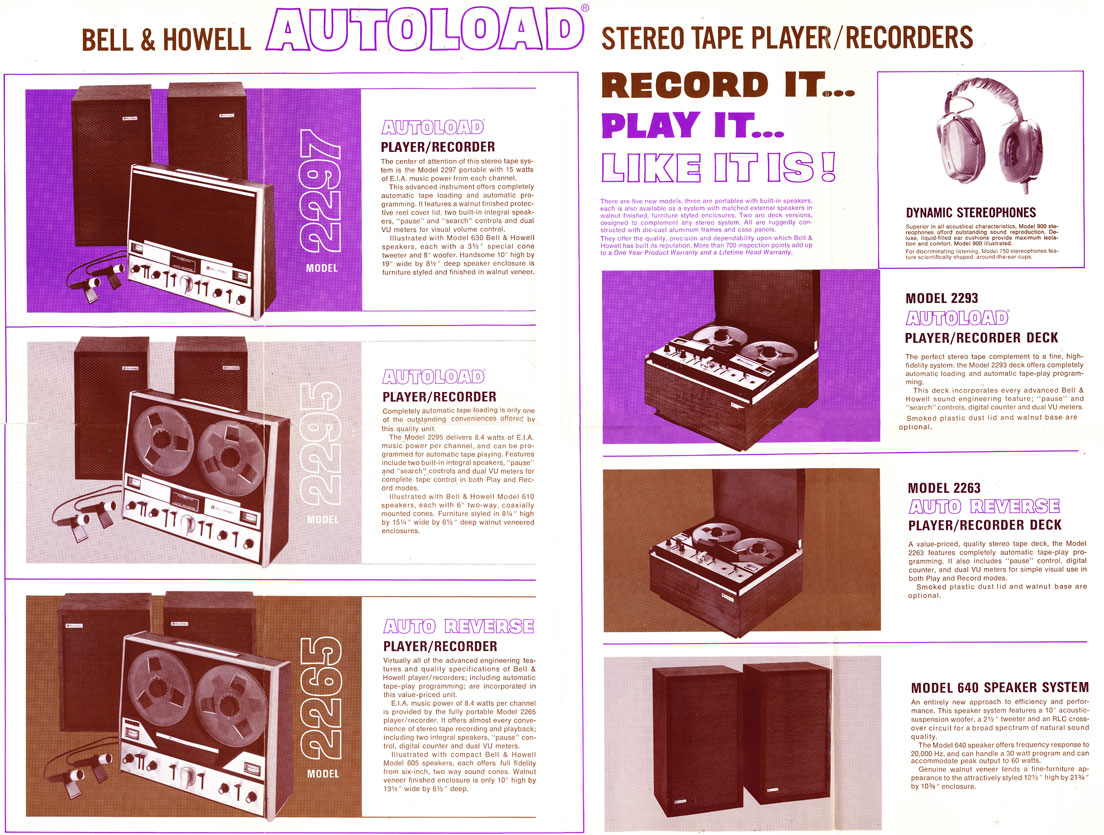
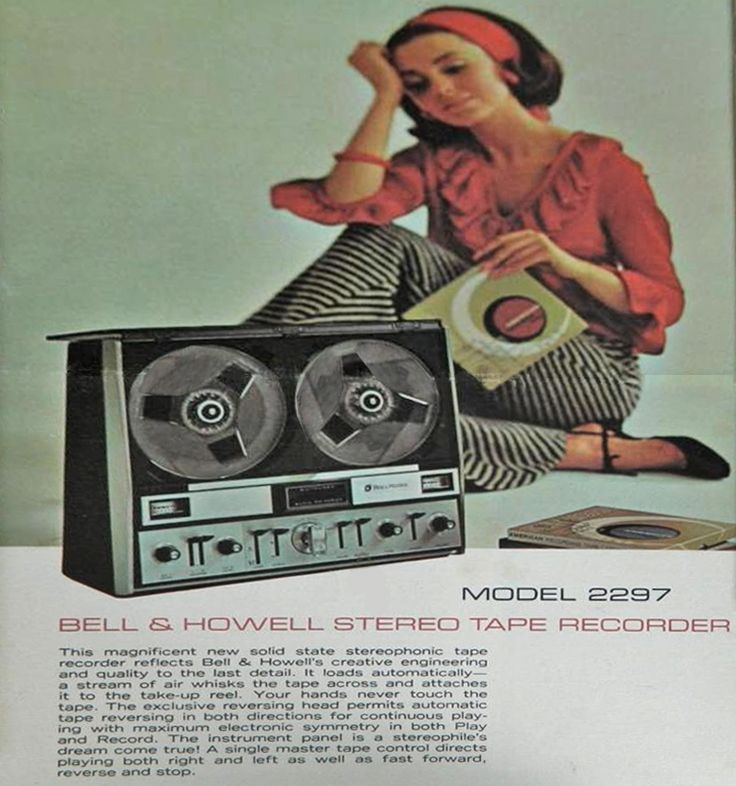
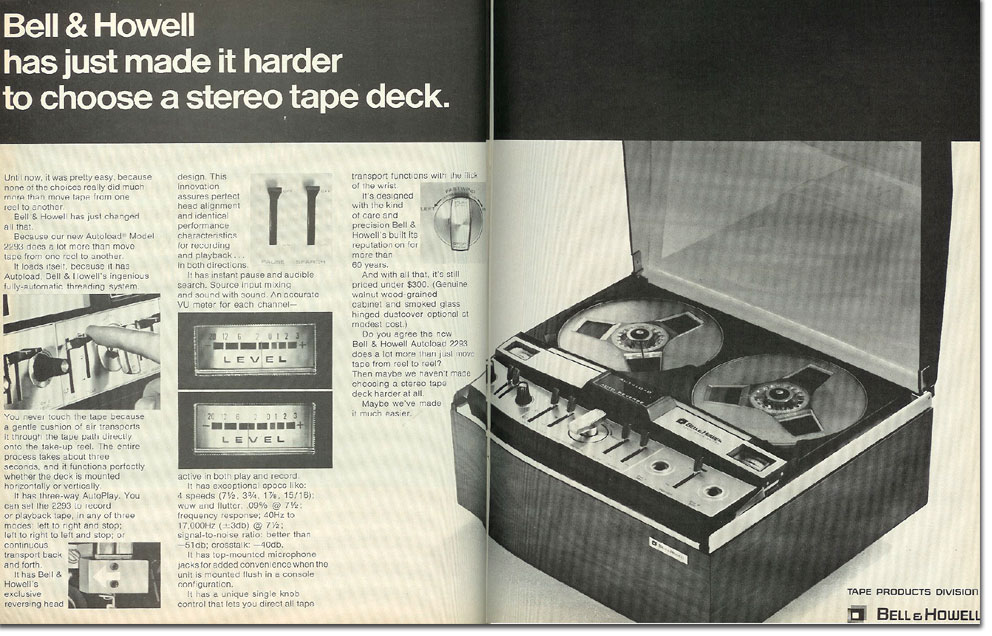


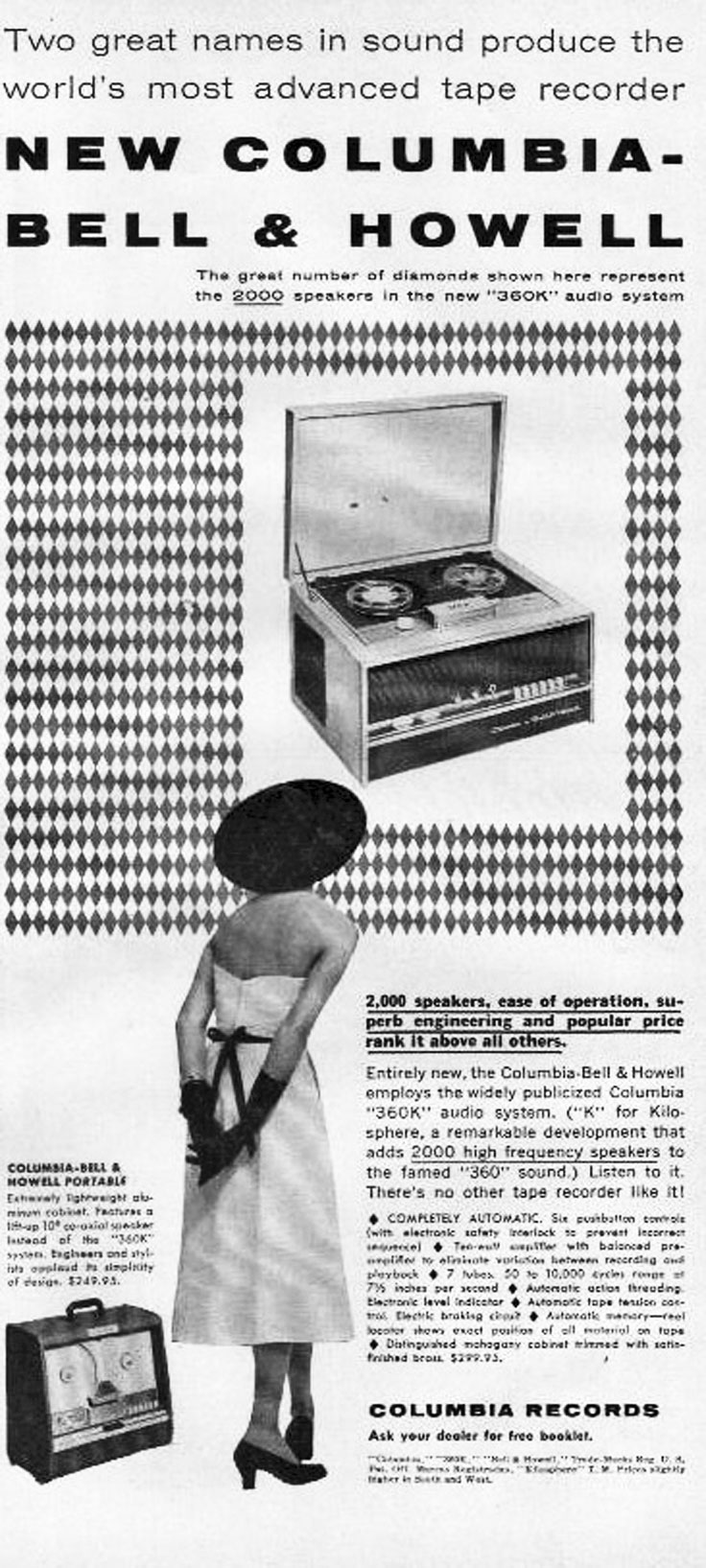

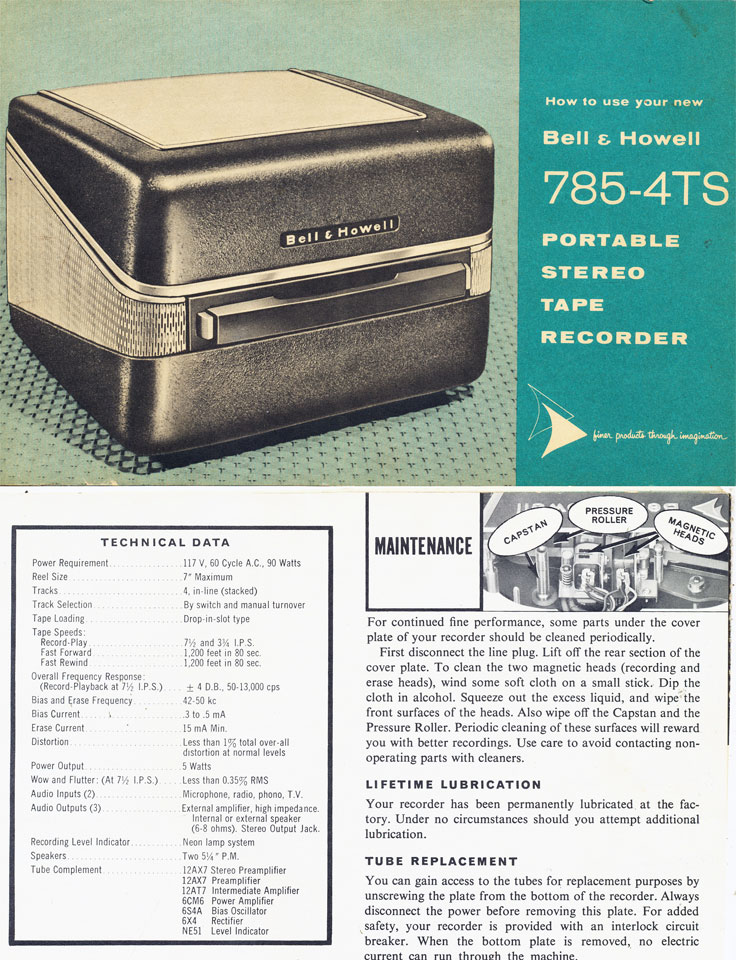
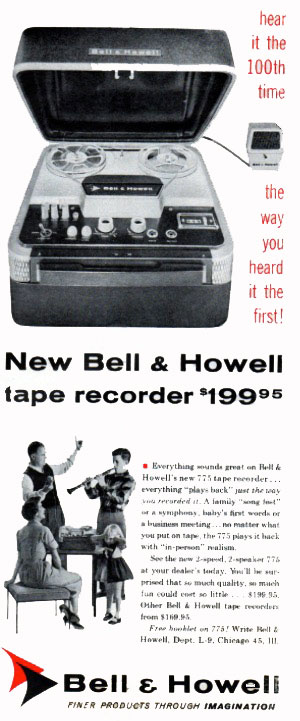
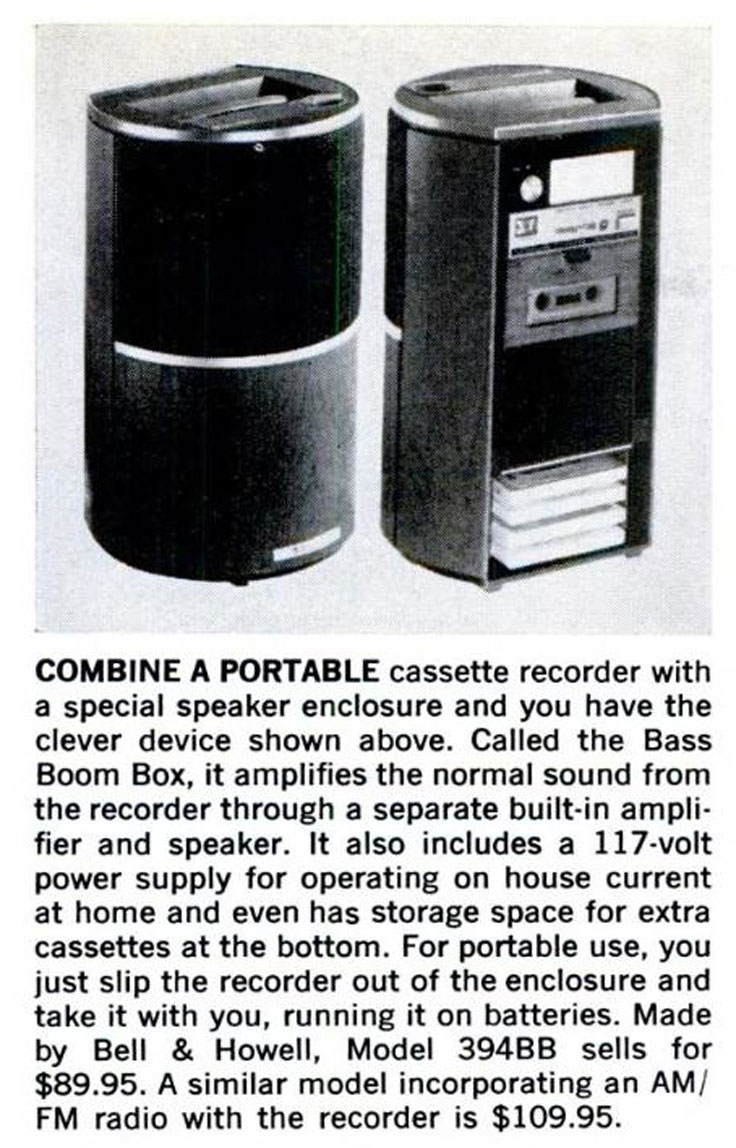

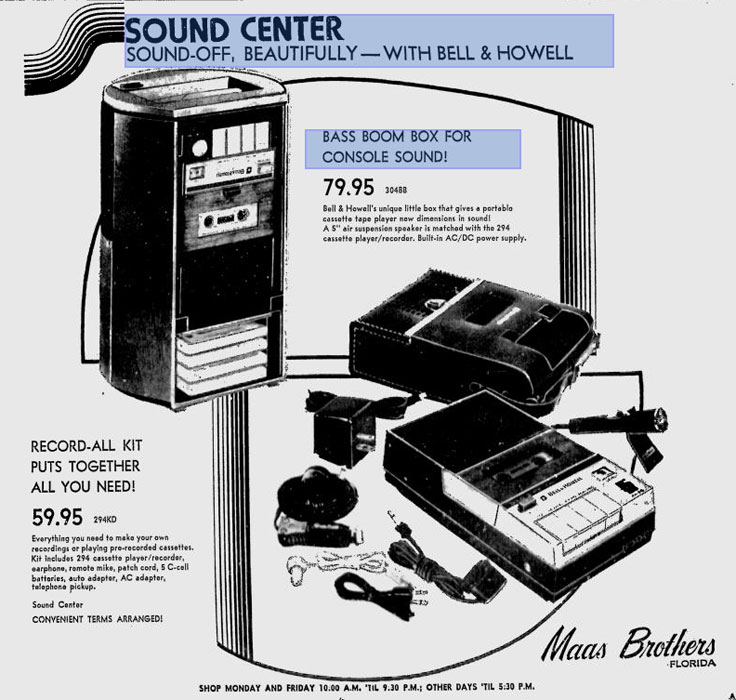
Bell and Howell reel to reel tape recording units in our collection

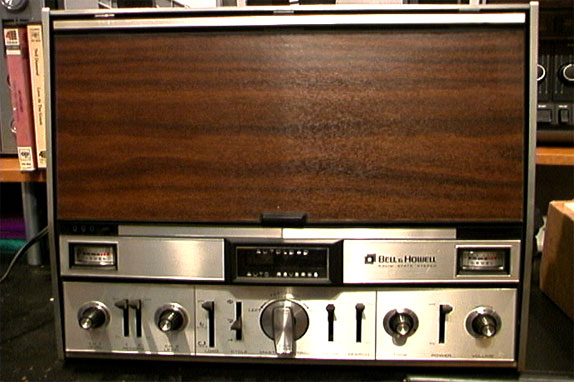
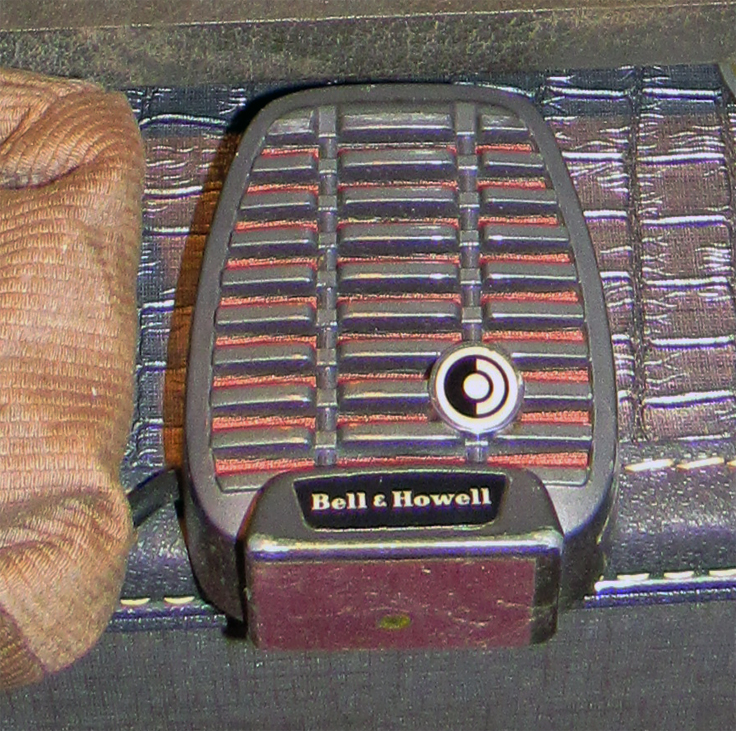
Bell and Howell 2297 vacuum loading model 2297 and an older Bell and Howell microphone
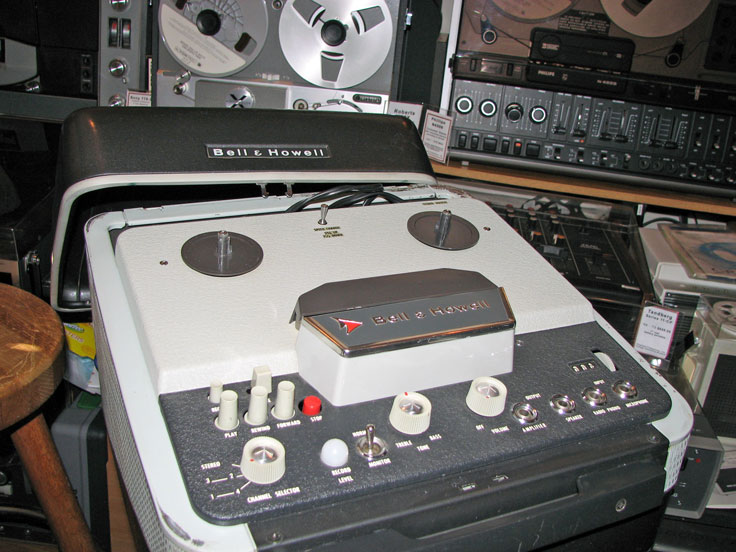
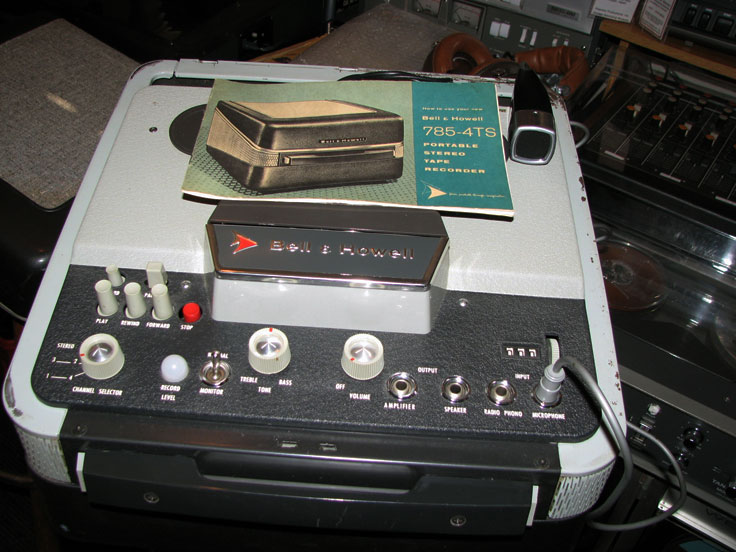
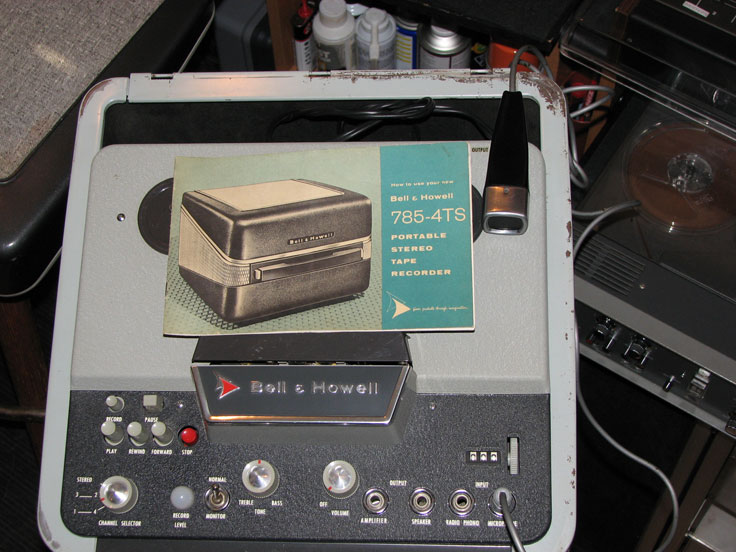
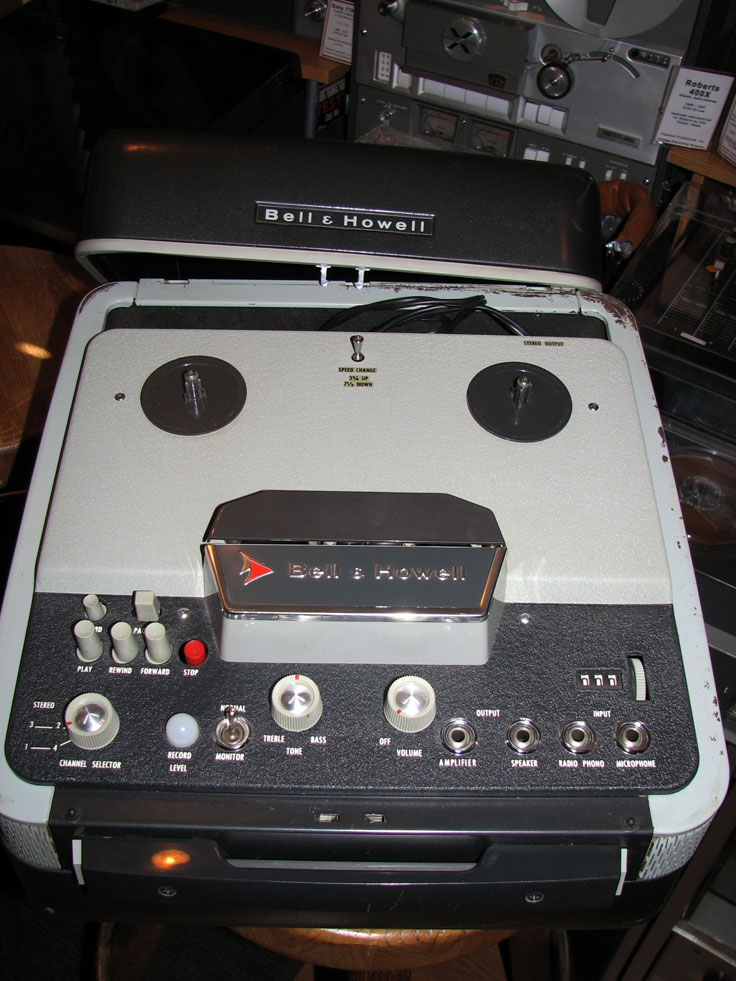
Bell and Howell 785-4TS donated to the Museum by Sandra Olson
Cassette Recorders
Bell and Howell Bass Boom Box

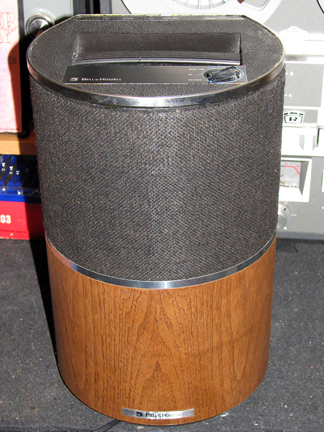
The non-profit Museum was dissolved on December 31, 2017. Donations are NOT tax deductible and are now processed by Phantom Productions.
All donations to MOMSR go 100% to support restoration of vintage magnetic recording devices in the private collection and help fund the web site development and hosting.

